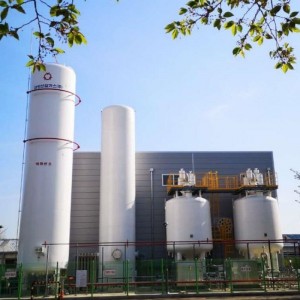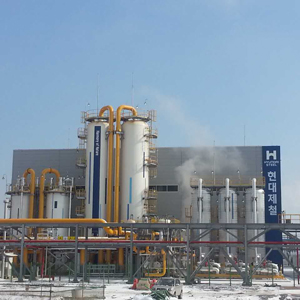Hydrogen by steam reforming process mainly includes four steps: raw gas pretreatment, natural gas steam reforming, carbon monoxide shift, hydrogen purification.
The first step is raw material pretreatment, which mainly refers to raw gas desulfurization, the actual process operation generally uses cobalt molybdenum hydrogenation series zinc oxide as a desulfurizer to convert organic sulfur in natural gas into inorganic sulfur and then remove it.
The second step is the steam reforming of natural gas, which uses nickel catalyst in the reformer to convert the alkanes in natural gas into feedstock gas whose main components are carbon monoxide and hydrogen.
The third step is carbon monoxide shift. It reacts with water vapor in the presence of a catalyst, thereby generating hydrogen and carbon dioxide, and obtaining a shift gas that is mainly composed of hydrogen and carbon dioxide.
The last step is to purify hydrogen, now the most commonly used hydrogen purification system is the pressure swing adsorption (PSA) purification separation system. This system has the characteristics of low energy consumption, simple process and high purity of hydrogen.
Natural Gas Hydrogen Production Technical Features
1. Hydrogen Production via Natural Gas has the advantages of large hydrogen production scale and mature technology, and is the main source of hydrogen at present.
2. The Natural Gas Hydrogen Generation Unit is high integration skid, high automation and it is easy to operate.
3. Production of hydrogen by steam reforming is cheap operation cost and short recovery period.
4. TCWY’s Hydrogen Produce Plant Reduced fuel consumption and exhaust emission by PSA desorbed gas burn-backing.
























